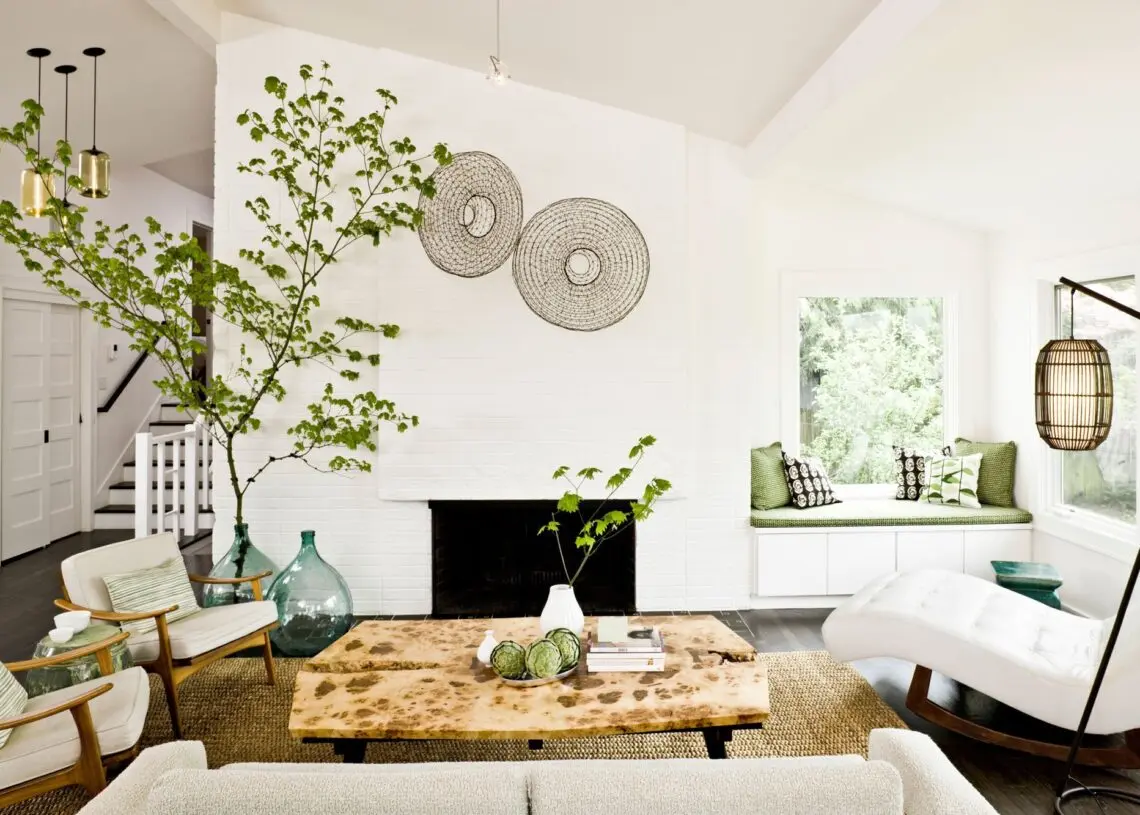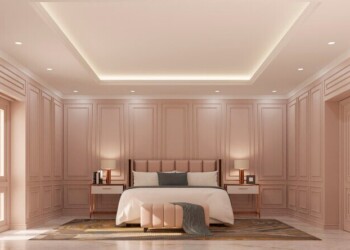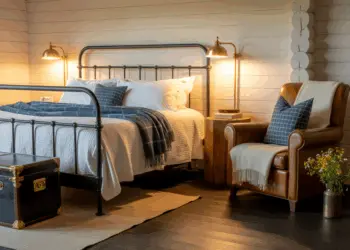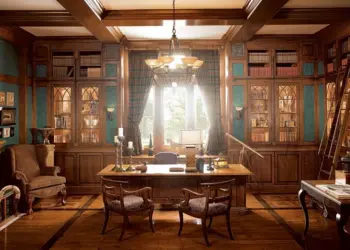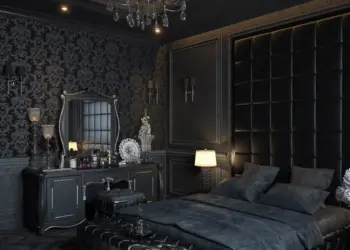Hey there, design enthusiasts! Ever find yourself swooning over those Instagram-worthy interiors that seamlessly blend modern aesthetics with the calming touch of nature? Well, you’re in for a treat because we’re diving into the enchanting realm of “20+ Ways to Embrace organic minimalist interior design.” Buckle up as we embark on a journey to make your living space a haven of organic modern magic!
Table of Contents
Understanding Organic Modern Design
Organic modern design seamlessly integrates the fundamental tenets of modernism with organic accents. Curtis defines it as a departure from traditional modern design, accentuating the use of organic materials and nature-centric elements. The hallmarks of this style include a palette of soft neutrals, abundant greenery, and a profound emphasis on creating a warm and inviting atmosphere.
1. Bring the Outdoors In!
Ever considered making your living room or dining room a lush, green paradise? Potted plants, succulents, or even a vertical garden can effortlessly elevate your space, creating an oasis right in the heart of your home.
Plants, the quintessential ambassadors of nature, play a pivotal role in organic modern design.
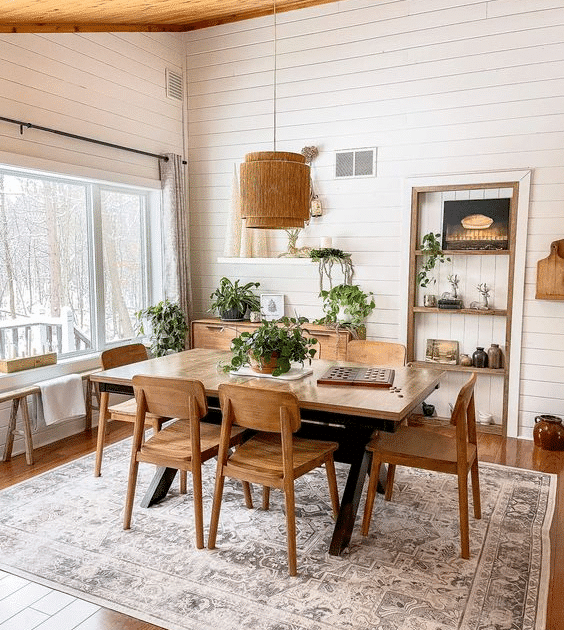
2. Earthy Color Palette Galore
Wave goodbye to sterile whites and grays! Embrace warm, earthy tones like olive greens, rusty oranges, and deep browns to infuse a sense of nature into your interiors. Picture the serenity of a forest translated onto your walls!
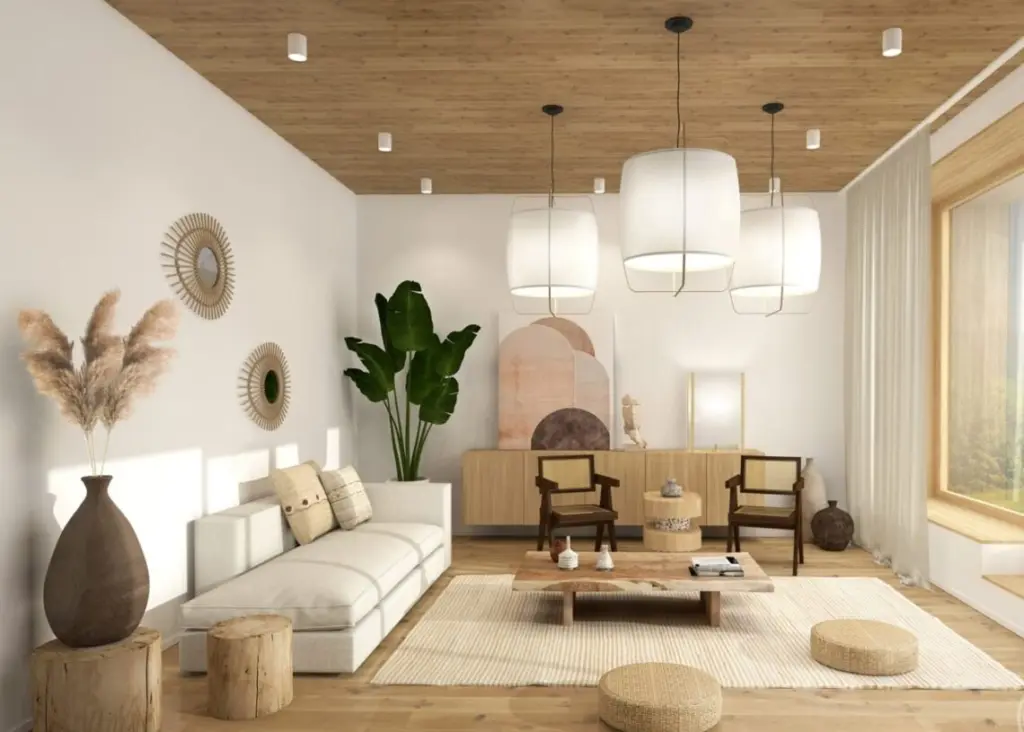
3. Sustainable Furniture Chic
Time to trade in those generic pieces for sustainable and eco-friendly furniture. Bamboo, reclaimed wood, and recycled materials not only add character but also help Mother Earth breathe a sigh of relief.
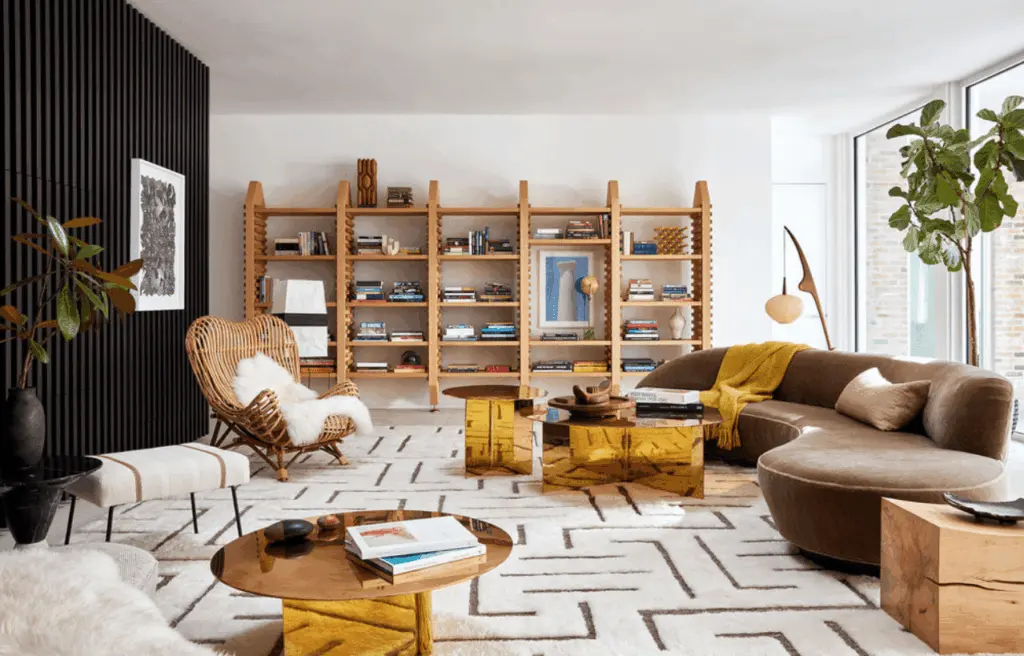
4. Soft Earthy Textures, Big Impact
Rives recommends a harmonious incorporation of natural materials into the design. Fuzzy or natural rugs, woven chairs, and raw wooden bowls become integral elements in an organic modern space. Throw in some plush, organic fabrics like cotton, linen, and wool to create a tactile haven. Drape your sofas in cozy throws and scatter cushions like fallen leaves in a forest – inviting and comforting!
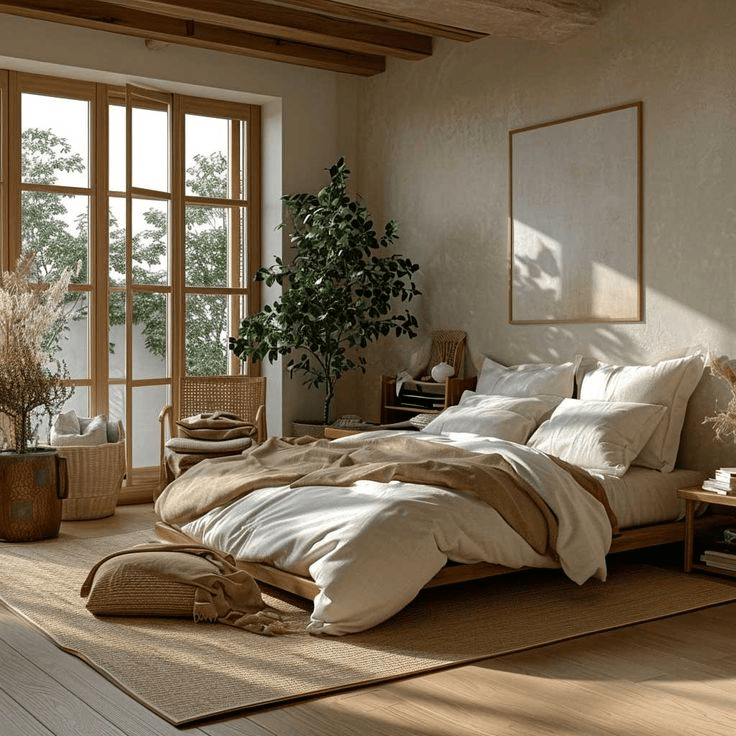
5. Nature-Inspired Artwork
Why not bring the beauty of nature inside with captivating artwork? Consider pieces that reflect the organic world – think landscapes, botanical prints, or abstract representations of natural elements. Your walls will thank you!
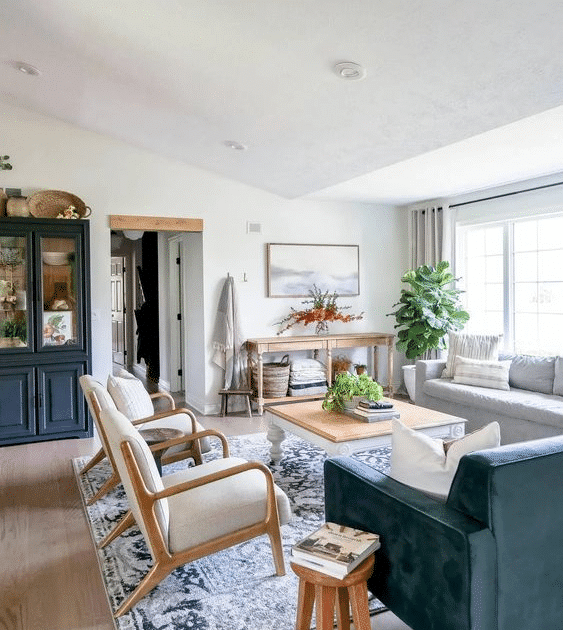
6. The Power of Natural Light
Swap heavy curtains for sheer ones and let the sunlight flood in! It not only brightens up your space but also gives it a fresh, airy vibe that is quintessentially organic modern.
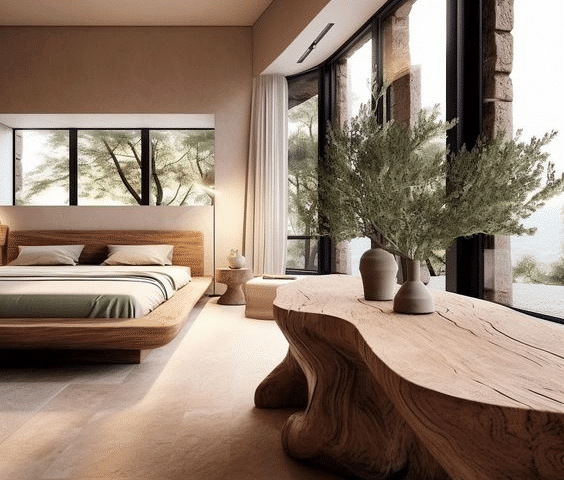
7. Statement Organic Lighting
Ditch the harsh fluorescents and opt for organic-shaped light fixtures. Think pendant lights that mimic tree branches or a chandelier that mirrors the elegance of blooming flowers. Let your lighting be a conversation starter!
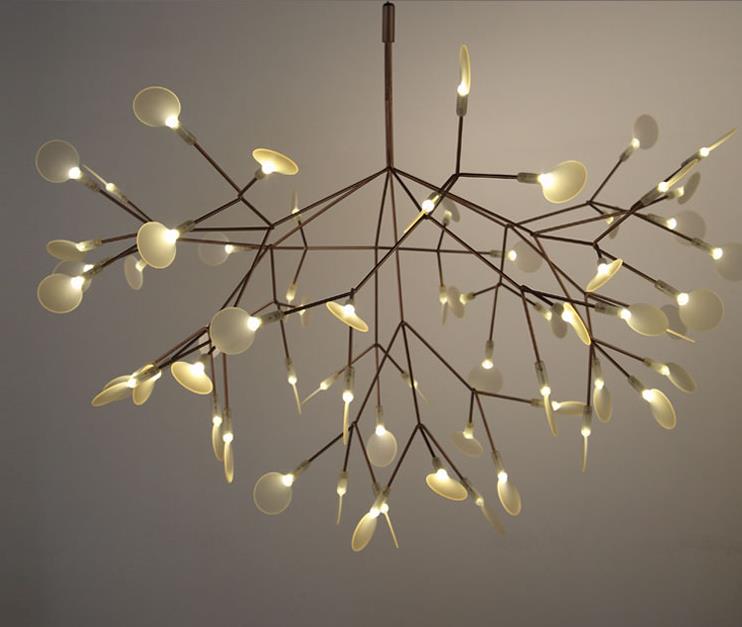
8. Raw and Unfinished Elements
Embrace the imperfect! Unfinished wood, exposed brick, and concrete accents add a touch of raw, organic charm. It’s the little imperfections that make your space uniquely beautiful.
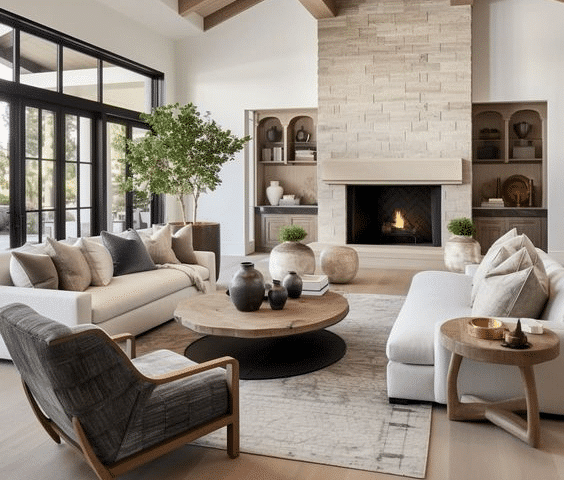
9. Sustainable Decor
From recycled glass vases to reclaimed wood sculptures, incorporating sustainable decor items not only adds character but also aligns with the essence of organic modern design. Your shelves deserve a touch of eco-chic!
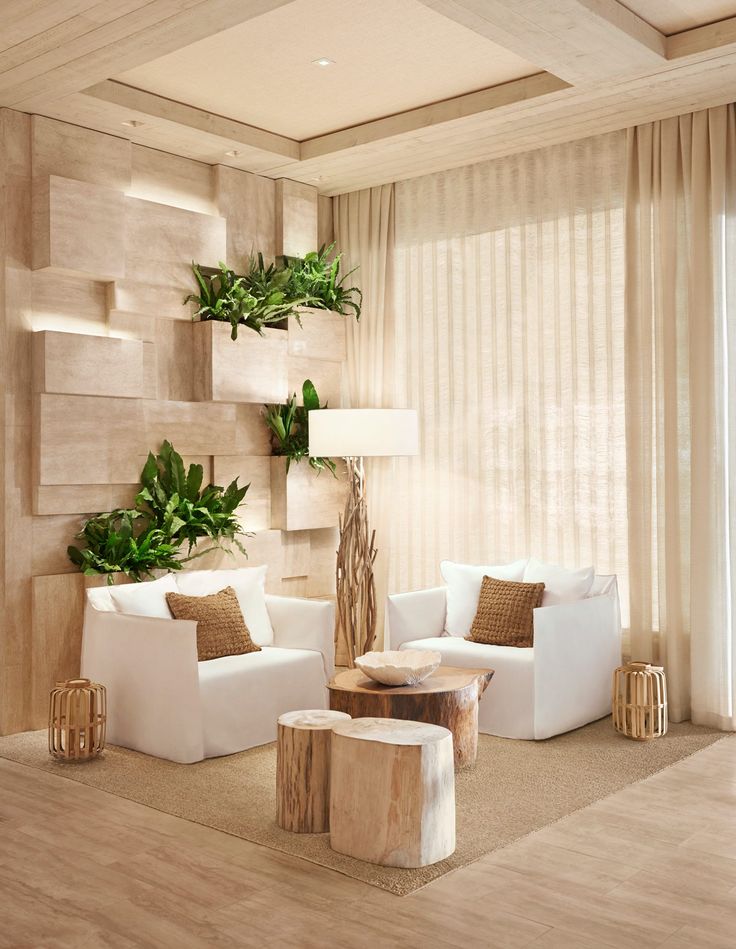
10. Open Shelving with a Twist
Opt for open shelving ideas to display your favorite decor pieces and books. Integrate natural elements like woven baskets or driftwood to add a touch of the outdoors to your storage solutions.
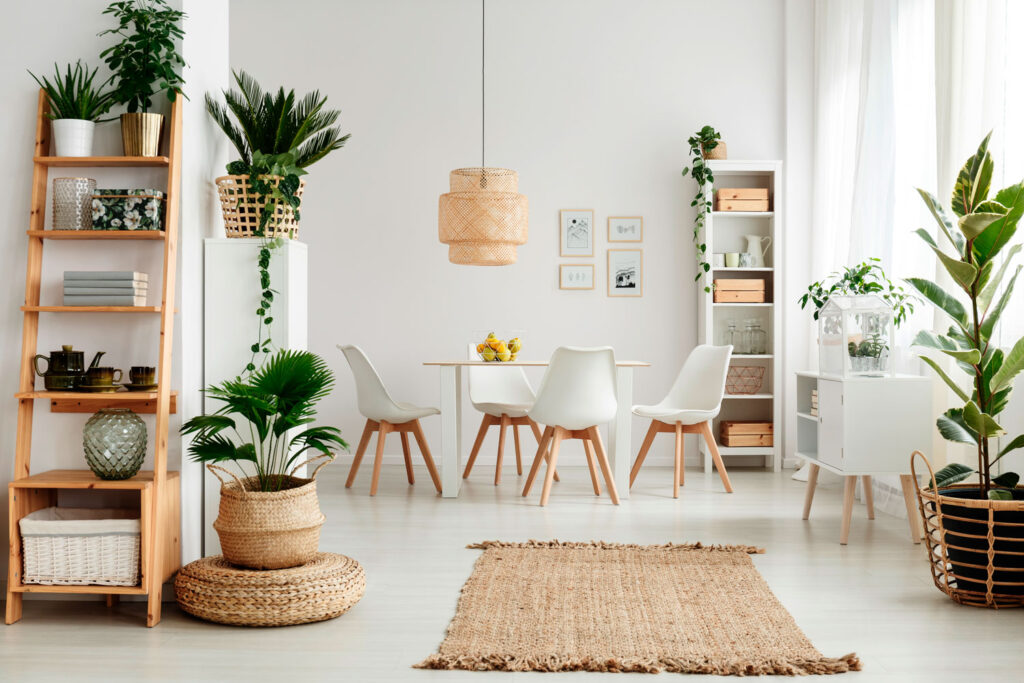
11. Harmonious Indoor-Outdoor Flow
Blur the lines between inside and outside by creating a seamless transition. Large glass doors, floor-to-ceiling windows, or even a cozy outdoor seating area can effortlessly merge your living space with the natural world beyond.
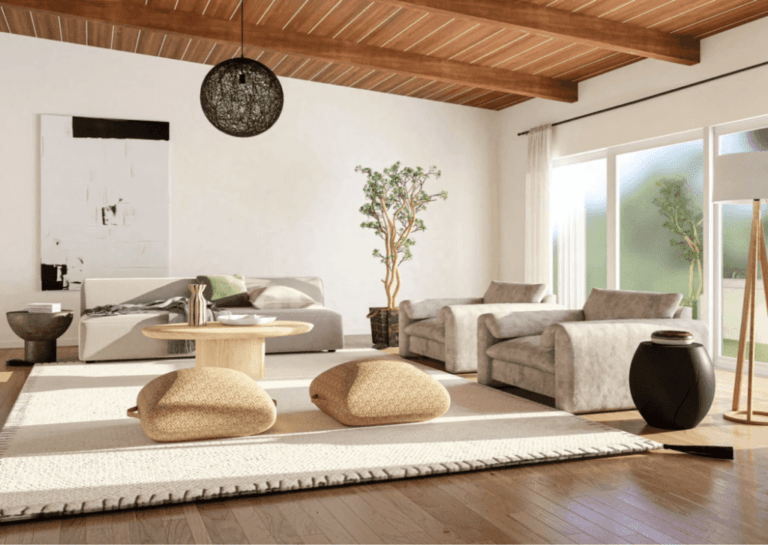
12. Keeping Clutter to a Minimum
While organic minimalist interior design allows for a minimalist approach, it’s crucial to strike a balance. Rives cautions against excessive decoration and clutter, emphasizing the need to maintain the core principles of modern design. The goal is to infuse just the right amount of décor, softening and surprising without overwhelming the space.
Minimalistic Greenery
Not a fan of the jungle look? No worries! Embrace minimalistic greenery – a single statement plant in a sleek pot or a row of minimalist succulents can do wonders without overwhelming your space.
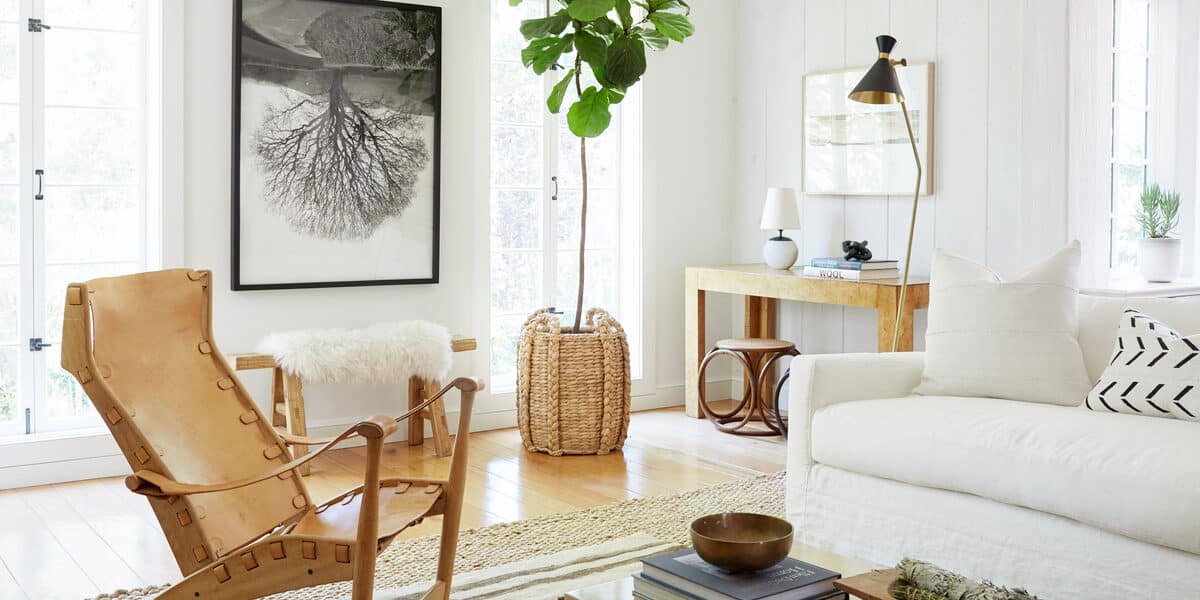
13. Nature-Inspired Rugs
Anchor your space with a rug that reflects the great outdoors. Whether it’s a rug with leafy patterns or one that mimics the texture of grass, this addition will ground your design while adding a touch of wilderness.
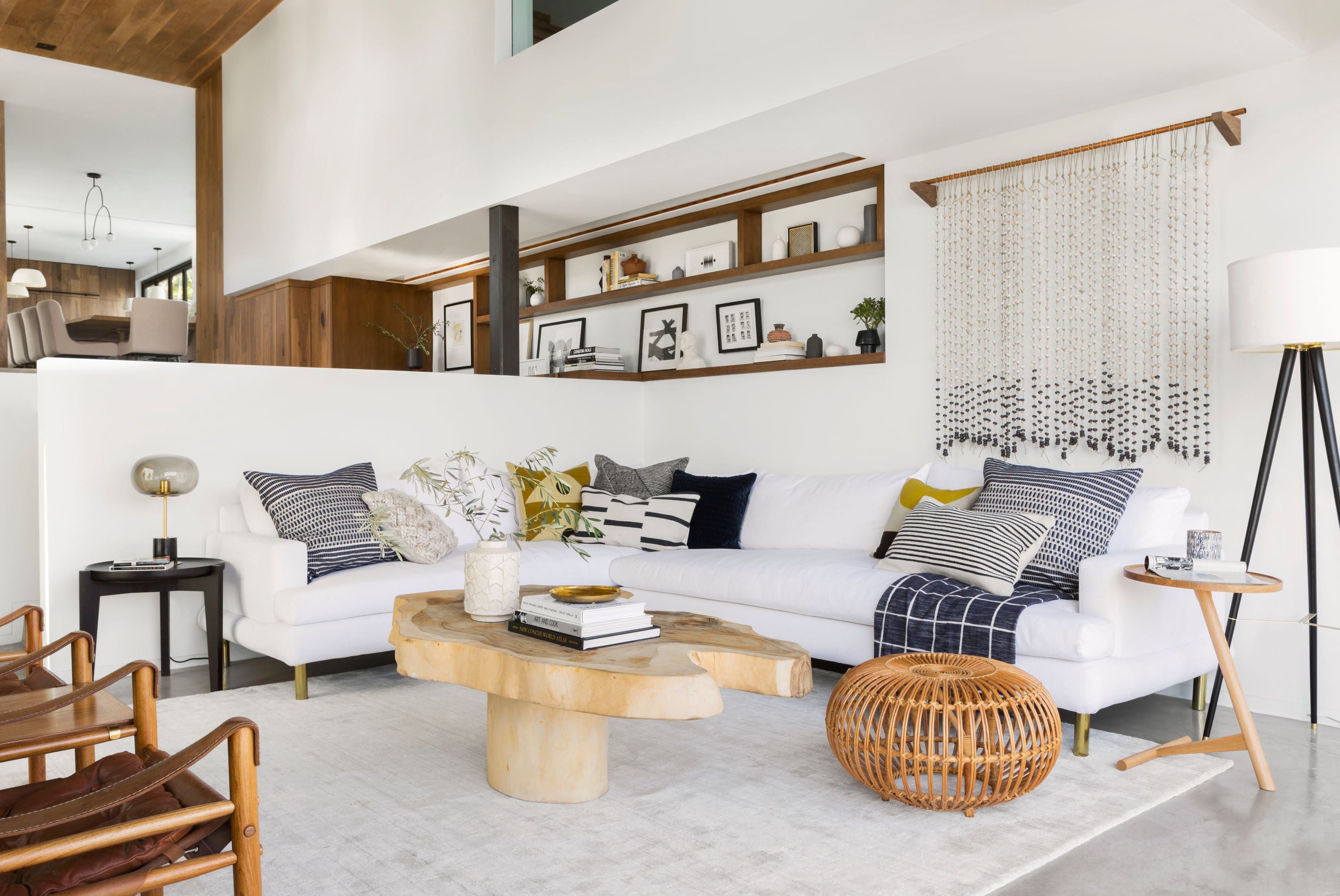
14. Biophilic Design Elements
Incorporate design elements that mimic nature’s patterns and shapes – think organic forms, fractal patterns, Or even furniture that curves and arches, mirroring the softer edges found in nature. Curtis encourages the inclusion of earthy, organic sculptures and pieces, advocating for curved couches, round armchairs, and other sculptural finds. This infusion of soft, organic shapes adds a layer of visual interest and warmth to the sleek lines of modernism.
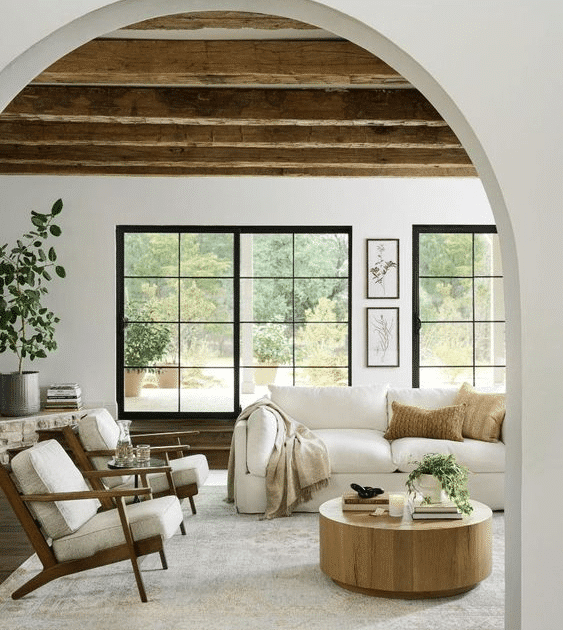
15. Water Features as Focal Points
Create a soothing ambiance with water features. Whether it’s a small tabletop fountain or a statement wall-mounted waterfall, the sound of flowing water adds a refreshing touch to your organic modern oasis.
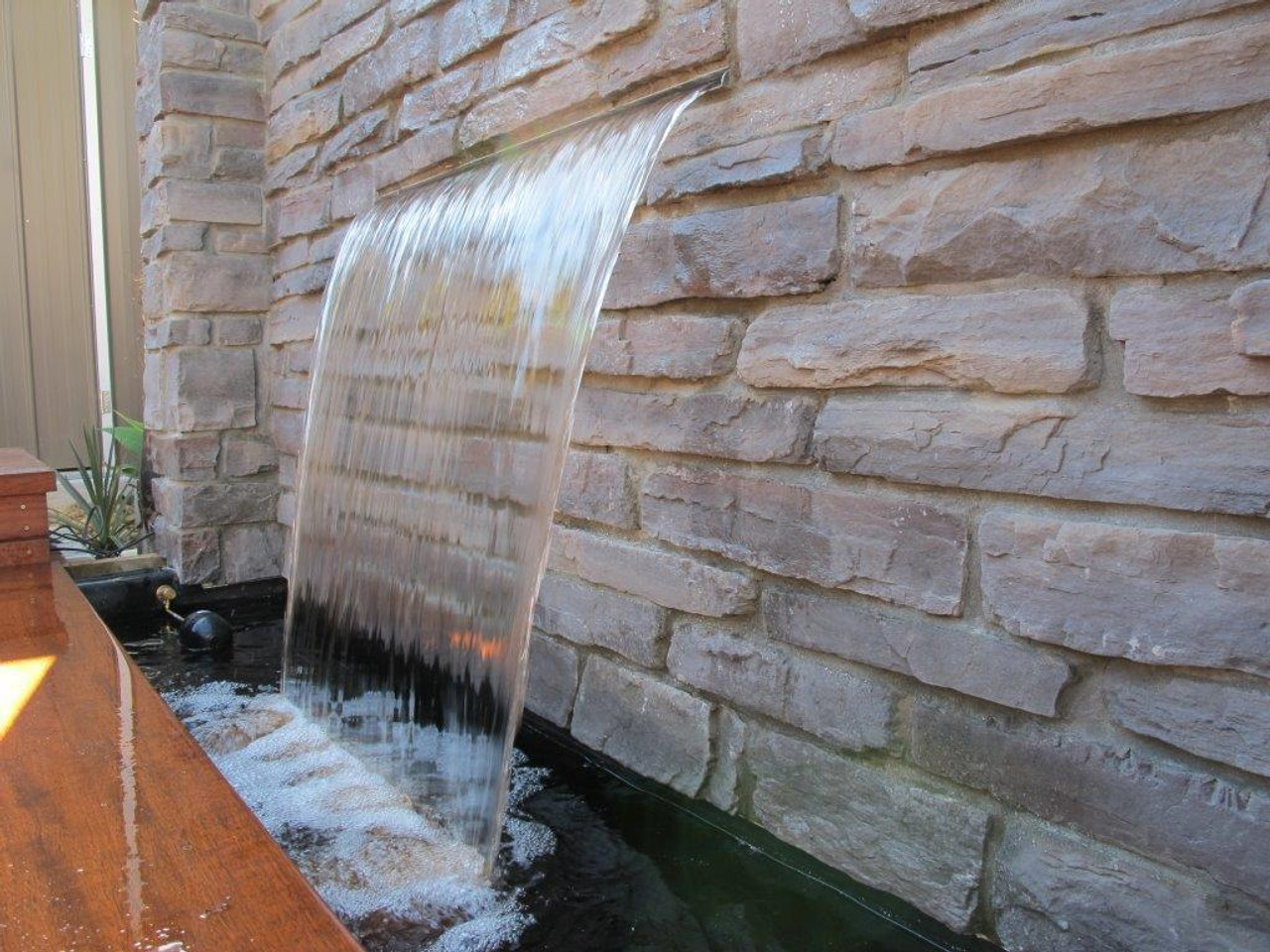
16. Natural Scents and Aromatherapy
Complete the sensory experience with natural scents. Essential oil diffusers, scented candles, or even dried herbs can bring the refreshing aroma of nature into your home, creating a multi-sensory haven.
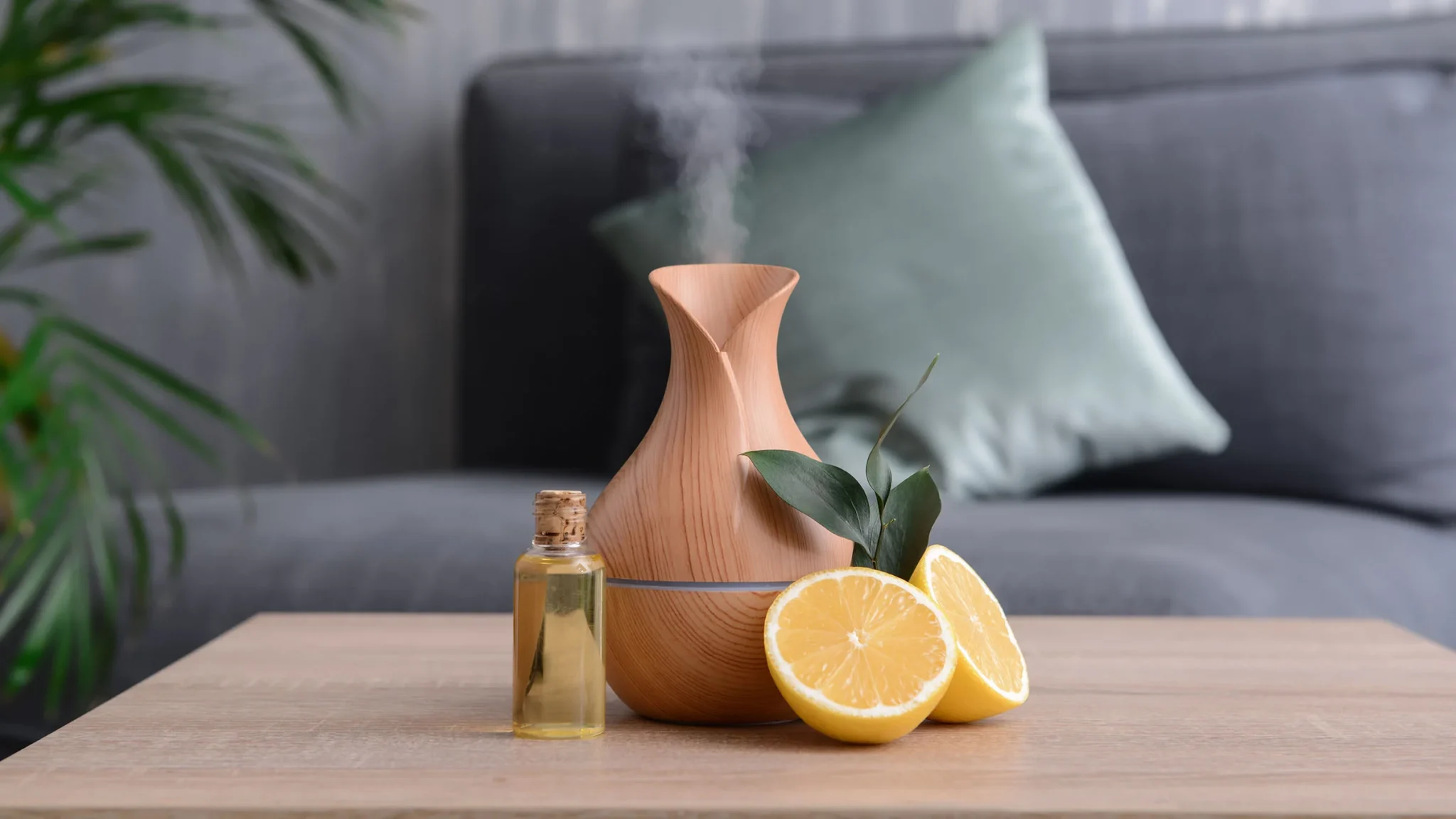
17. Sustainable Flooring
Extend your commitment to sustainability to the ground beneath your feet! Opt for bamboo, cork, or reclaimed wood flooring to add warmth and character to your space while treading lightly on the planet.
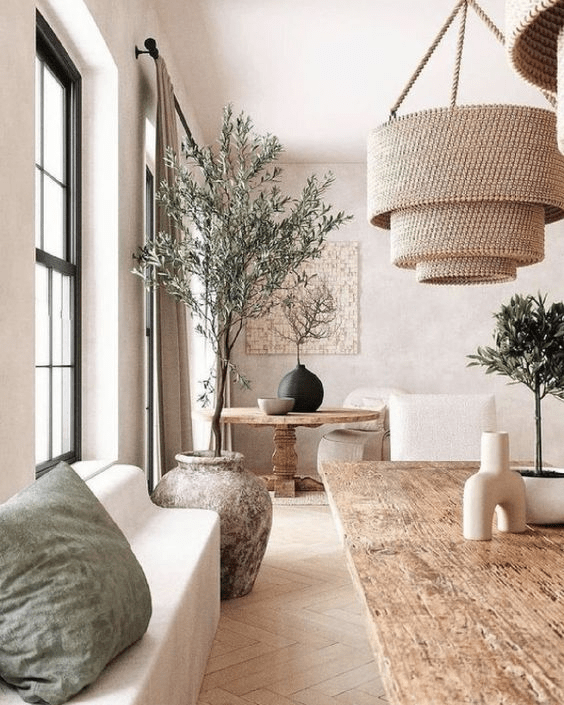
18. Soften Edges with Curves
Balance the clean lines of modern design with soft, curved furniture. From sofas to coffee tables, introducing rounded shapes adds a touch of organic grace to your living space.
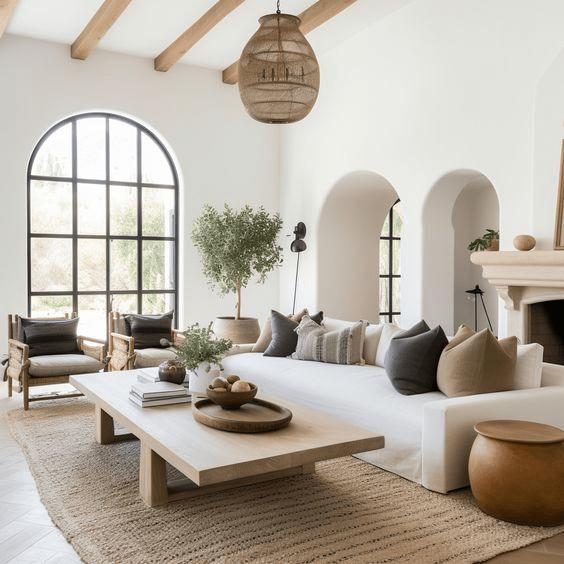
19. Lining Walls and Ceilings With Wood: Reclaimed Wood Accents
Wood, a versatile and timeless natural material, finds its place in organic minimalist interior design. The Obermanns stress the importance of incorporating wood to evoke a warm ambiance. Whether it’s a coffee table, a feature wall, or floating shelves, hardwood floors, reclaimed wood adds a rustic, wood becomes a unifying element, adding both visual and tactile warmth to the space. lived-in feel. Each piece tells a story, making your space not just beautiful but rich with history.
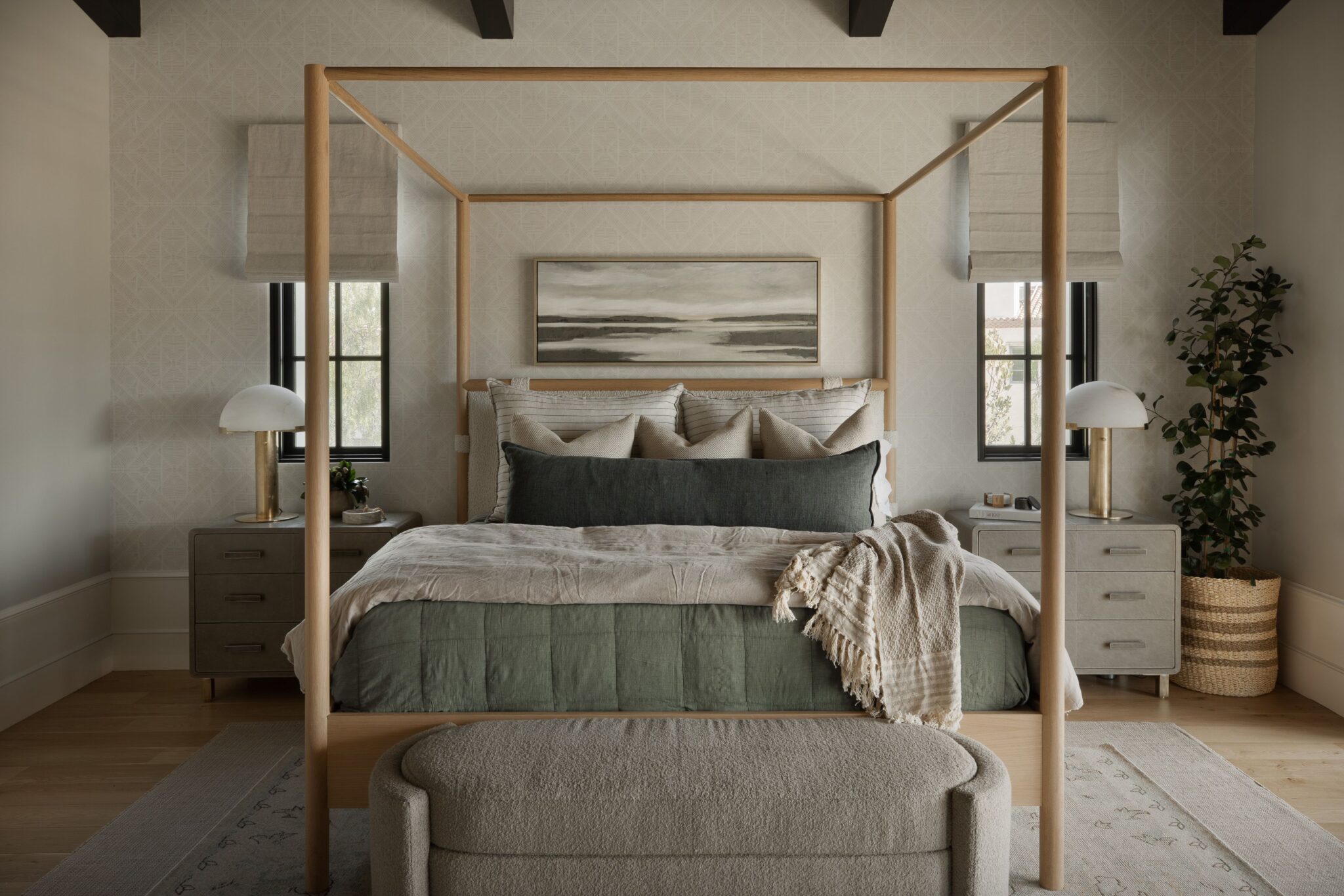
20. Stocking Up on Unique DIY Touches
Inject your personality into the design by incorporating DIY touches. Create your own art, repurpose old furniture, or handcrafted unique decor items. Not only does it add a personal touch, but it also aligns perfectly with the sustainable ethos of organic minimalist interior design.

21. Sneaking in Pops of Color
Contrary to misconceptions, organic minimalist interior design welcomes splashes of color. Curtis dispels the fear of using color, encouraging the inclusion of vibrant elements such as marigold pillows, rust velvet chairs, or colorful rugs. These additions inject vitality and interest into the neutral palette without compromising the overall aesthetic.
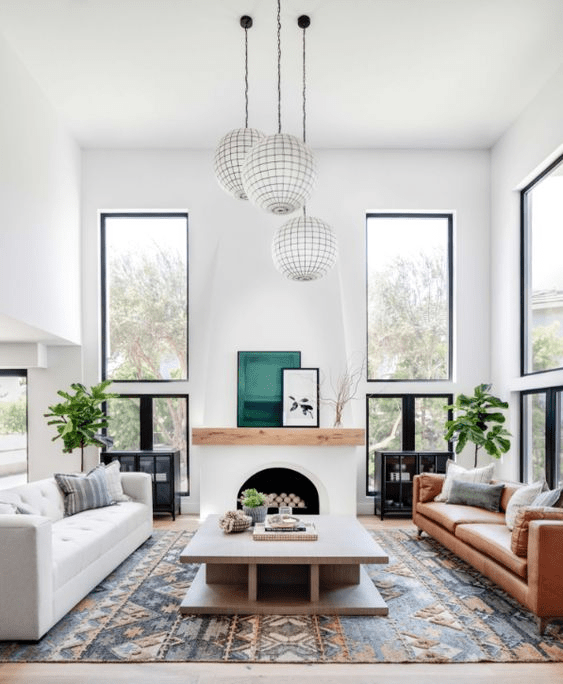
And there you have it – 20+ Ways to Embrace organic minimalist interior design and turn your home into a sanctuary of style and serenity! Remember, it’s all about striking the perfect balance between modern aesthetics and the raw, organic beauty of nature. So go ahead, let the magic unfold, and transform your living space into a haven that’s uniquely you!
FAQs
What is modern organic interior design?
Modern organic interior design is a style that blends contemporary elements with natural, organic influences. It emphasizes the use of sustainable materials, earthy color palettes, and forms inspired by nature. This design approach seeks to create spaces that feel harmonious, balanced, and connected to the outdoors, promoting a sense of well-being and environmental consciousness.
What is the organic style of design?
The organic style of design is characterized by a focus on natural forms, textures, and materials. It draws inspiration from the shapes and patterns found in nature, incorporating curves, flowing lines, and biomorphic forms. Organic design aims to create environments that evoke a sense of tranquility and connection to the organic world.
Can I still achieve organic modern design on a budget?
Absolutely! Thrift stores, DIY projects, and a keen eye for natural textures can help you achieve the look without breaking the bank.
What is organic form in interior design?
In interior design, organic form refers to shapes and patterns that mimic the irregular, asymmetrical, and flowing characteristics found in nature. Furniture, decor, and architectural elements with organic forms often feature curves, soft lines, and fluid shapes, deviating from rigid geometric structures.
What is the difference between organic modern and modern farmhouse style?
Organic modern style combines contemporary design with natural elements, featuring clean lines, neutral colors, and sustainable materials. In contrast, modern farmhouse style blends modern and rustic elements, incorporating reclaimed wood, farmhouse-inspired decor, and a cozy, lived-in feel. While both styles embrace natural elements, their overall aesthetics and influences differ.
How do I balance modern and organic elements without it looking cluttered?
Choose a neutral base, then layer on organic elements strategically. It’s all about balance and letting each piece shine.
What are the characteristics of organic interior?
Characteristics of organic interior design include:
- Natural Materials: Use of sustainable and natural materials like wood, stone, and bamboo.
- Earthy Color Palette: Neutral tones inspired by nature, including browns, greens, and earthy hues.
- Biophilic Design: Integration of natural elements, plants, and ample natural light.
- Soft Lines: Curved and flowing forms, avoiding harsh geometric shapes.
- Sustainable Design: Emphasis on eco-friendly and environmentally conscious choices.
- Connection to Nature: Designs that evoke a sense of being connected to the natural world.
What is the characteristic of organic design?
Characteristics of organic design include an emphasis on:
- Natural Forms: Use of shapes and patterns inspired by nature.
- Harmony: Creation of spaces that feel balanced and cohesive.
- Texture: Incorporation of natural textures like stone, wood, and textiles.
- Flow: Fluid and continuous lines, avoiding sharp angles.
- Biomorphic Elements: Forms that mimic living organisms and natural processes.
- Sustainability: Preference for sustainable and environmentally friendly materials.
